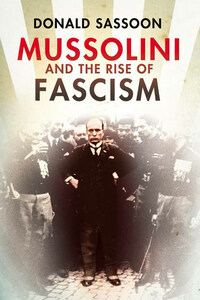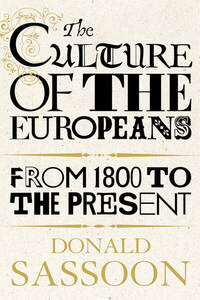On the morning of 30 October 1922 Benito Mussolini arrived in Rome, not on horseback, as he may have originally fantasised, but on the overnight wagonâlit from Milan, aware that King Victor Emmanuel III was to appoint him Prime Minister and entrust him with the formation of a coalition government.
While the future Duce was discussing strategy with his fellow travellers and meditating in his sleeping compartment, his supporters were converging towards the capital, some by car, others walking, but mostly by special trains, chartered with the help of the government. It was the soâcalled âMarch on Romeâ which had started on 28 October.
Ten years later, in a diary written with more hindsight than is usually the case, Italo Balbo, one of the more violent followers of the Duce, wrote that, from the beginning, fascism possessed the certitude that its destiny was the conquest of power through a violent insurrectionary act that would mark a caesura between old Italy and a new emerging country.>1
It is often the case that those who proceed illegally try to find some legal reasons why they acted as they did. Sometimes revolutionaries insist on the legality of their actions, ignoring the short cuts they had to take. In Mussoliniâs case it was almost the reverse. He preferred to pretend that he had taken power by force, and that power had been given to him because he had already won it on the battlefield. But Mussoliniâs advent to power was â strictly speaking â quite legal. As the great liberal politician and former Prime Minister Giovanni Giolitti explained to his constituents on 16 March 1924, Mussolini had been appointed constitutionally, had sworn allegiance to the King and the constitution, and had presented his programme to Parliament, from which he had asked and obtained full powers.>2
Yet the language used by the fascists at the time and in the following years depicted an uprising and celebrated revolutionary violence â one of several influences of the Bolshevik Revolution on the fascists. On 29 October 1922, Mussoliniâs newspaper, Il Popolo dâItalia, announced that âThe whole of central Italy, Tuscany, Umbria, Marche, and northern Latium is occupied by the Blackshirts,â conjuring up an image of armed occupation.>3 To a reporter of the Milan daily Corriere delta sera Mussolini declared: âTell the truth. We have made a revolution unparalleled in the whole world ⦠We have made a revolution while public services continued to function, without stopping trade, and with employees remaining at their desks, workers in their factories, and peasants peacefully tilling their fields. It is a new style of revolution.â>4
This image of turmoil and radical change was reinforced with the passing of time. The philosopher Giovanni Gentile, writing in 1924, claimed that the March had been a reaction âagainst all the ideologies of the previous century: democracy, socialism, positivism, and rationalism; it was the vindication of idealist philosophyâ.>5 The preface to a collection of Mussoliniâs main speeches published in 1928 enthused thus:
In 1922 He marches on Rome. He is Italy on the move. The Revolution continues. After half a century of lethargy the nation creates its own regime. The State of the Italians arises. Their power emerges. Their virtues appear. Their empire is in the making. This great renaissance ⦠shall have His name. Throughout the world an Italian century is opening up: the century of Mussolini.>6
And when Mussolini addressed the Senate on 5 July 1924 he boasted that fascism obtained power by an âunquestionably revolutionary actâ, by force of arms, marching on Rome âarmata manuâ.>7
Twenty years later, in 1944, as the Duce faced defeat, more sober thoughts surfaced. Having escaped from the prison where he had been confined by the same monarch who had originally appointed him, Mussolini, now a pathetic Nazi puppet, recognised that fascism had not come to power by revolution. A true revolution, he wrote, would have required a fundamental change in the institutional framework of the state, but this had been left untouched by the events of October 1922: âThere was a monarchy before and there was a monarchy afterwards.â>8 He forgot to add that the King would not have turned against him had not the Grand Fascist Council forced him to resign. The great dictator had come to power legally, and was removed legally, not just by an old institution, the monarchy, but also by one, the Grand Fascist Council, which he had himself created.
Mussolini had given up on the ârevolutionâ well before his train approached Rome on that fateful lateâOctober morning. The seductive appeal of power had made itself felt some time before, when he had become aware that he could get what he wanted more easily and speedily by compromising with the monarchy â one of the gestures that decisively propelled much of the political establishment into granting him full powers. Mussolini had realised there was no point in launching a major enterprise to grab power if power was his for the taking. His more naive followers had not grasped this strategic point. As they marched under incessant rain they assumed they were making history, but the Duce arrived in Rome before them in his wagonâlit to be driven to the palace, where he declared himself to be His Majestyâs âloyal servantâ.









